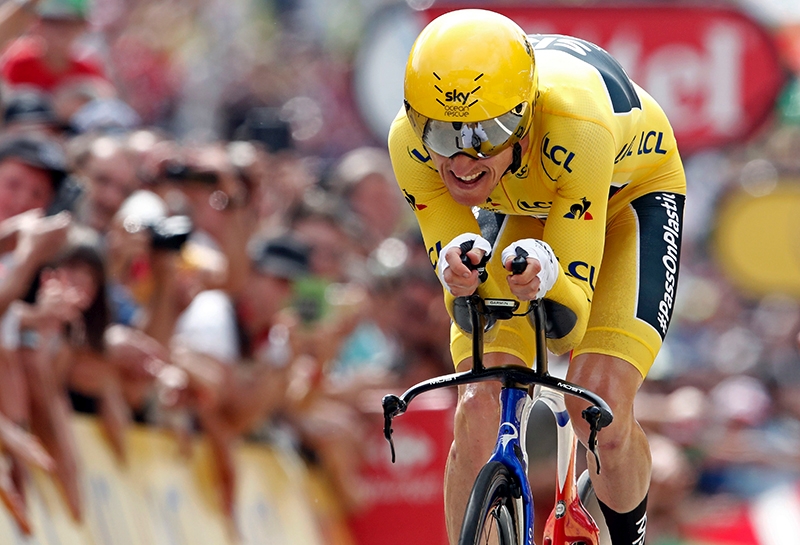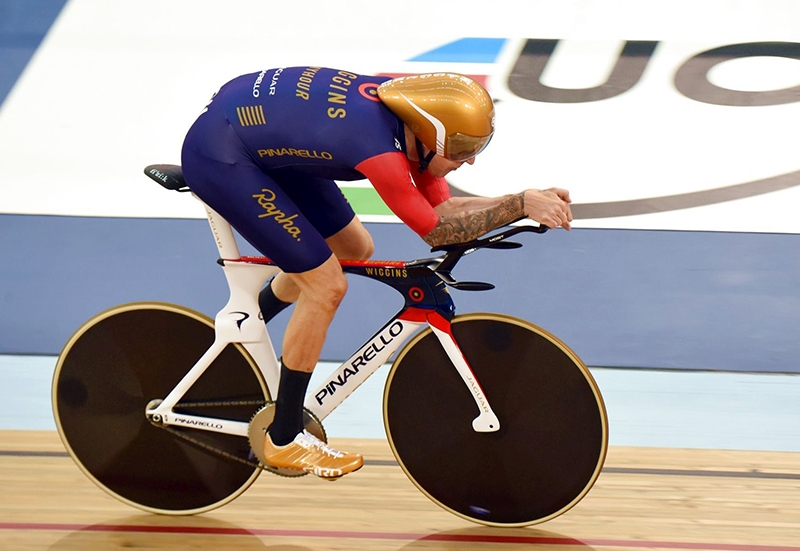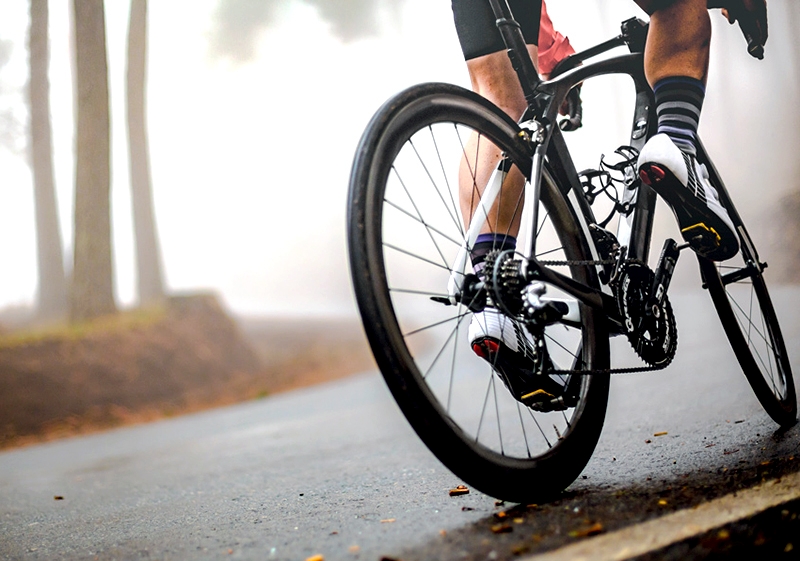You are viewing 1 of your 1 free articles. For unlimited access take a risk-free trial
Time trial pacing: should you be a steady Eddie or speedy Gonzalez?
Andrew Hamilton looks at what the science says about cycling time trial pacing and comes up with some surprising conclusions…
When it comes to pacing yourself through a time-trial or sportive, you probably already know that tearing off like a bat out of hell might get you a good time for the first few miles, but as that fatiguing lactate accumulates in your legs, you’ll pay the price later. But then setting a leisurely pace that enables you to feel good right to the end might leave you wondering just how much faster you could have been if you’d pushed harder, earlier on? So how should you judge your effort and pace to maximise your overall performance?A popular method for shorter time trial events is to think about mentally splitting the distance up into four quarters and deciding the relative effort you’re going to put into each quarter (see panel 1). However, if the event involves your first ever 100-mile sportive, your main pacing strategy is likely to be one of taking it nice and steady, just to make sure you get to the end!
Panel 1: The quarters approach
A commonly used approach in time trialling (including the cycle leg of triathlon) is to think about how you’re going to pace each ‘quarter’ of the event. It’s often recommended that you hold back on your effort a little bit for the first quarter in order to ‘find your cycling legs’ and build a foundation for the next three quarters. The second quarter is one where you increase your speed somewhat to hit your desired pace while in the third quarter, the goal is to try and dig in mentally to try and maintain that pace. In the final quarter, the end is in sight so the goal here is to gradually increase your effort further (if you can) as you approach the finish line.Panel 2: Variable pacing theory
Back in 2007, a group of British researchers began modelling variable versus constant power strategies during simulated cycling time-trials of 10km and 40km distances to see how different the pacing strategies coped with tailwinds, headwinds of up to 10m per second and gradients of up to +10% and –10%(1,2). Among the race scenarios were:- A 10-km time-trial with alternating 1km sections of 10% and -10% gradients;
- A 40-km time-trial with alternating 5km sections of 4.4m per second headwinds and tailwinds.
The researchers then went on to test their theory using real cyclists who rode a bicycle ergometer that simulated uphill and downhill sections during a time-trial course(3). Each rider rode the course as quickly as they could with no constraints and from this, their average power was calculated. They then had to complete the simulated course using two pacing strategies:
- At a constant power equivalent to the average power achieved during their initial ride;
- Using variable power, increasing power output by 5 % over the average when travelling uphill and decreasing the power in the downhill sections (so that overall power was equivalent to that in the constant ride).
Even effort versus variable effort
Regardless of the distance involved in a particular event, much of the advice out there suggests that your best strategy is to maintain a steady, even level of effort throughout the ride, adjusting your work rate to ensure you’re working near your maximum sustainable capacity for that distance. However, while an ‘even effort’ strategy sounds intuitively correct, recent cycling research, suggests that when it comes to the real world with hills and tail/headwinds, it might not be best after all.A few years ago, evidence derived from mathematical modelling suggested that varying power outputs according to conditions could produce faster times (see panel 2 above). Now very recent research carried out on real cyclists riding real time trials seems to confirm these earlier findings(4). Another group of British scientists looked two different pacing strategies performed by 20 experienced cyclists over an undulating time trial course. These strategies were:
- To maintain a constant power output of 255 watts throughout;
- To maintain an average power output of 255 watts over the course as a whole but allow for variations in power output at different parts of the course according to gradient.
Headwinds
These findings on varying power output as a function of gradient also seem to be in agreement with some earlier findings on variable pacing with simulated headwinds and tailwinds(5). Seven cyclists rode their own bikes on a Computrainer cycle ergometer, which was programmed to simulate a 16.1 km time trial on a flat course with an 8kmh headwind in the first half of the race and an 8kmh tailwind in the second half. All the subjects rode an initial time-trial at a self-selected pace to the best of their ability and the average power output from this trial was then used to calculate the pacing strategies in the subsequent two trials, A and B:- Variable - riders rode the first headwind section at a power output 5% higher than their average and then reduced the power output in the last 8km so that their overall average power output was the same as in the initial time trial.
- Constant - riders rode the whole time-trial keeping their power output exactly the same as the average power output they obtained in the initial trial.
Why does variable power make sense?
A variable power strategy seems to improve cycling performance over a given distance where the gradient is not constant and when you think about it, this makes sense. Firstly, it can be very difficult to maintain a constant power output during cycling. Even on the flat, winds continuously change in direction and strength, which means for a steady speed, your effort is constantly changing. Then of course, when the going gets hilly, it’s even harder to maintain a constant effort, even with intelligent use of the gears. This is partly because on short and gentle uphills, it feels more natural to try and maintain a constant speed and pedalling cadence without dropping a gear, even though power demand can then rise dramatically.Secondly, working harder on an uphill section and saving energy on a downhill section can reduce energy losses due to wind drag, which on the bike at least, is your main enemy. The power needed to overcome wind drag increases as the cube of your speed. For example, raising your speed from 16mph to 24mph equates to a speed increase of 50%. However the power requirement to achieve this jumps by a massive 335%!
Varying your effort and working harder to maintain your speed on an uphill section produces only small amounts of extra wind drag compared to staying at constant power and slowing down as you climb (because either way, your speed is relatively low). But by backing off on the downhill section (thereby slowing down compared to an even power output), the energy losses due to drag are considerably less than a faster descent (which would occur under constant power). Remember, energy expenditure due to wind drag increase as the cube of speed – ie they become very much more significant at higher speeds!
Theory into reality
So how can we translate these findings into the fastest possible time-trial pacing? Here are a few tips that translate this research into practical recommendations:- For time-trialling on a very flat course in completely calm conditions, a fairly constant power strategy is likely to yield the best results.
- In undulating conditions, allowing your power to increase by up to 10% on the uphill sections and drop a similar amount on the downhills is likely to produce a faster time. The same applies (to a lesser degree) in headwinds and tailwinds respectively.
- Although power output can be monitored with power meters, you can also use a heart rate monitor. Don’t try and keep your heart rate constant but expect to see it climb 10-15bpm during harder sections and fall by a similar amount during easier sections. However, try and maintain the same average bpm over the event as a whole;
- For very long events (eg where you’re pushing your body over a much greater distance than normal), it’s best to play safe by taking it nice and steady the whole way, making sure you get to complete the distance.
- Regardless, always listen to your body is telling you regarding your pace!
References
- J Sports Sci. 2007 Jul;25(9):1001-9
- J Sports Sci. 2008 Aug;26(10):1123
- Int J Sports Med. 2007 Feb;28(2):157-63
- Int J Sports Med. 2011 Feb;32(2):132-6
- Ergonomics. 2000 Oct;43(10):1449-60
Newsletter Sign Up
Testimonials
Dr. Alexandra Fandetti-Robin, Back & Body Chiropractic
Elspeth Cowell MSCh DpodM SRCh HCPC reg
William Hunter, Nuffield Health
Newsletter Sign Up
Coaches Testimonials
Dr. Alexandra Fandetti-Robin, Back & Body Chiropractic
Elspeth Cowell MSCh DpodM SRCh HCPC reg
William Hunter, Nuffield Health
Keep up with latest sports science research and apply it to maximize performance
Today you have the chance to join a group of athletes, and sports coaches/trainers who all have something special in common...
They use the latest research to improve performance for themselves and their clients - both athletes and sports teams - with help from global specialists in the fields of sports science, sports medicine and sports psychology.
They do this by reading Sports Performance Bulletin, an easy-to-digest but serious-minded journal dedicated to high performance sports. SPB offers a wealth of information and insight into the latest research, in an easily-accessible and understood format, along with a wealth of practical recommendations.
*includes 3 coaching manuals
Get Inspired
All the latest techniques and approaches
Sports Performance Bulletin helps dedicated endurance athletes improve their performance. Sense-checking the latest sports science research, and sourcing evidence and case studies to support findings, Sports Performance Bulletin turns proven insights into easily digestible practical advice. Supporting athletes, coaches and professionals who wish to ensure their guidance and programmes are kept right up to date and based on credible science.














